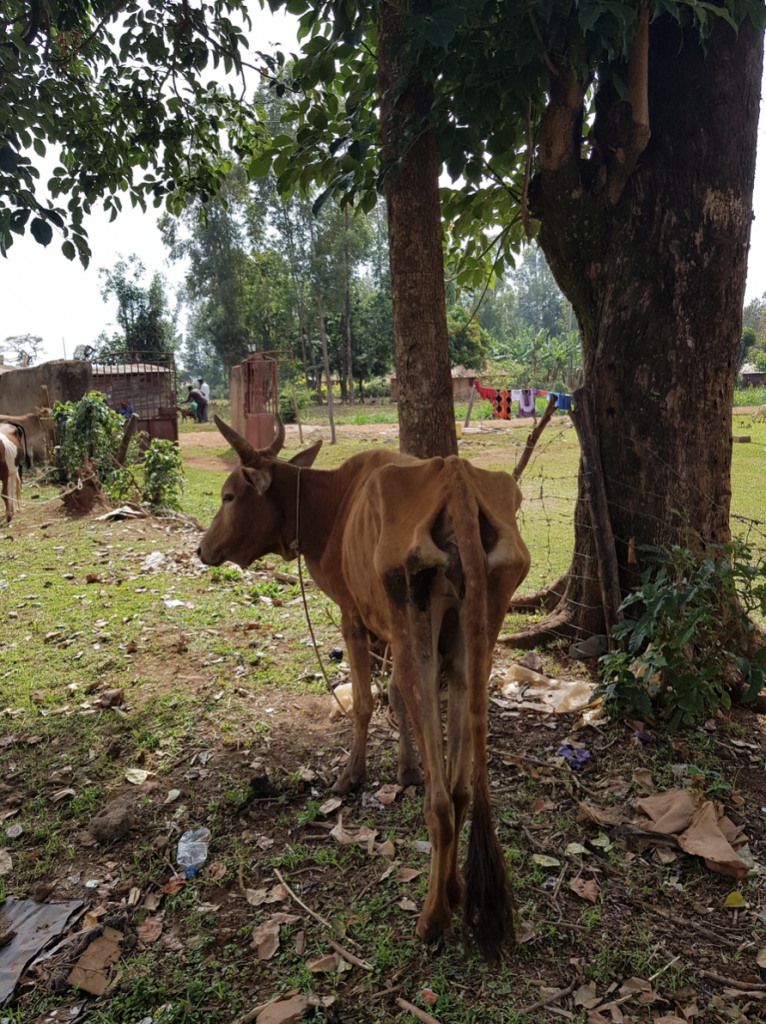
Photo Credit ILRI/ZooLink
Trypanosomiasis description
Trypanosomiasis is a disease of humans and animals caused by blood parasites and transmitted by tsetse flies.
Trypanosomiasis is called Nagana in animals and sleeping sickness in humans.
Nagana causes serious economic losses in livestock from anemia, loss of condition and emaciation. Many untreated cases are fatal
In humans, sleeping sickness is commonly found in 37 African countries geographically distributed in two forms and fatal if not treated.
One form is endemic in 24 countries West and Central Africa while the other form is endemic in 13 countries of Eastern and Southern Africa
Transmission of Trypanosomiasis
The parasite develops in the tsetse fly and is transmitted into animals/ people through a bite. The parasite develops in the animal/ humans causing sickness.
Trypanosomes can also be spread by equipment we use on farm such as surgical instruments, needles, syringes and various biting flies including horse flies
Trypanosomiasis animal symptoms
The disease can affect cattle, water buffalo, sheep, goats, camels, horses, donkeys, pigs, dogs, and cats
Symptoms of disease in animals will occur as from 4 days to approximately 8 weeks after infection
The main signs of trypanosomiasis in animals are: fever, swollen lymph nodes, weight loss, anaemia, decreased milk production and abortions.
Trypanosomiasis human symptoms
Symptoms in humans occur in two stages: (1) Early stage and (2) Late stage
Early stage symptoms are non-specific and often un/misdiagnosed e.g. fever, irritability, fatigue, swollen glands, aching muscles and joints, and headaches
Late stage symptoms cause serious mental disorders including sleeping problems and mental problems
If trypanosomiasis is untreated in people, infection becomes worse and death occurs within months.
Trypanosomiasis prevention and control
Nagana can be managed by reducing tsetse fly populations, breeding trypanotolerant animals and treating infected animals with antiparasitic drugs
Vector control for trypanosomiasis includes clearing vegetation and bushes, grazing away from tsetse-infested areas, insecticide ground and aerial spraying
Drugs that kill trypanosomes are available and are used in the treatment of sick animals.
In humans, prevention of trypanosomiasis is avoiding tsetse fly bites, by wearing protective clothing, using insect repellant, avoiding bushes in infested areas
Treatment of trypanosomiasis in people requires a diagnosis of infection by a medical practitioner before drugs are given.
Warning for Trypanosomiasis
If you suspect your animals have Trypanosomiasis contact your veterinarian immediately to work on a management plan
In humans, if one suspects they have Trypanosomiasis, they should consult a medical health care provider for confirmation and treatment.
Content provided by Zoonotic and Emerging Diseases Group (ZED) University of Liverpool , International Livestock Research Institute (ILRI), Zoonoses in Livestock in Kenya (ZooLink)